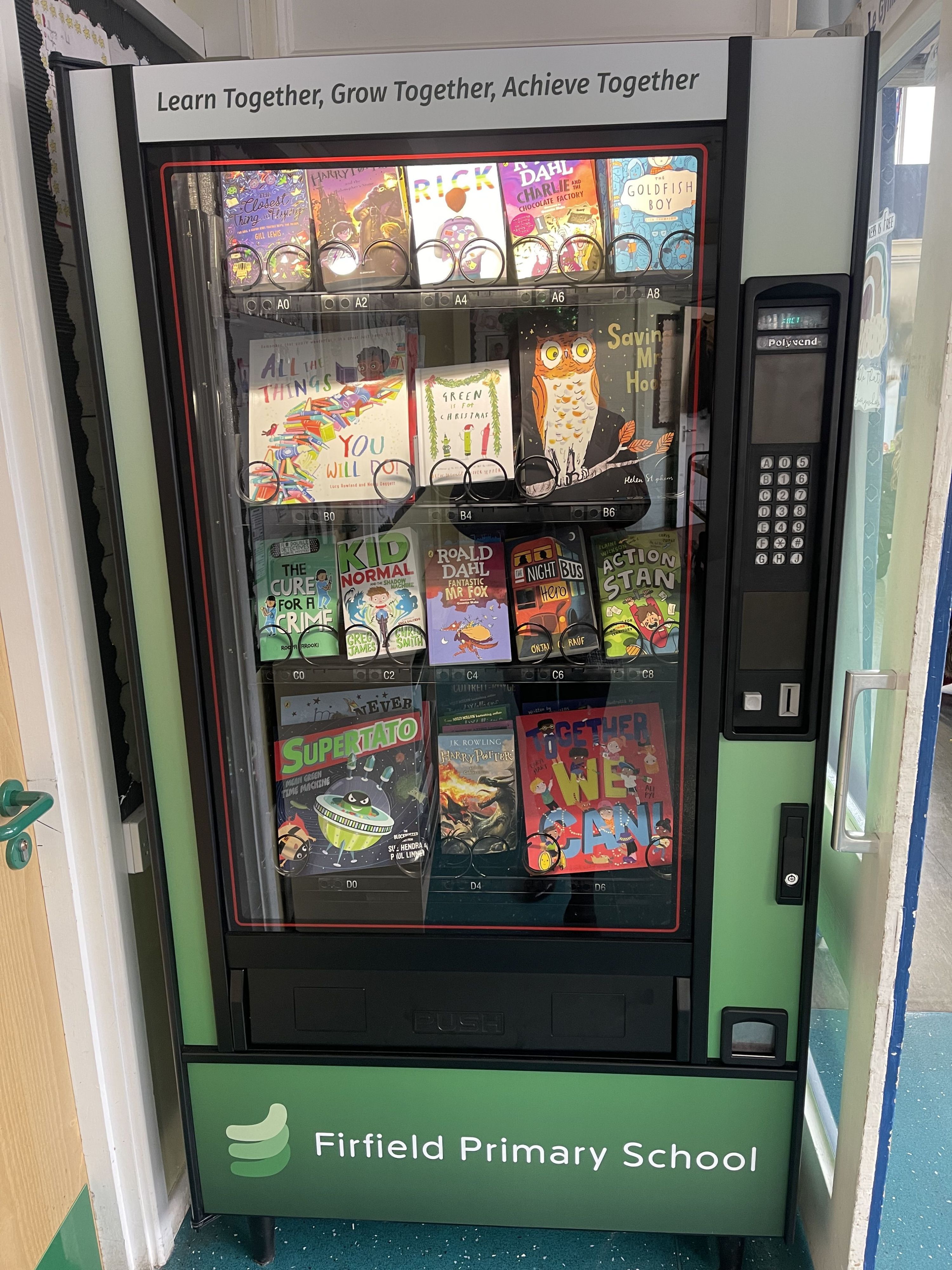Reading at Firfield

At Firfield, reading is at the heart of the curriculum: it is the key that opens up the entire curriculum for our pupils. Our pupils learn to read, and read to learn. Children will learn to read with confidence, fluency and understanding, providing them with the skills required to achieve a lifetime of enjoyment through reading. Children read in school independently, with peers, with adults and as a shared class session. They listen to adults and other children read, taking part in paired reading and discussions with their peers.
How you can help your child with reading at home:
Daily reading practise will help develop children’s decoding and comprehension skills although it is not expected that they will read a whole book every night. Children may only read 3 or 4 pages of their book but will spend longer discussing their understanding of what they have read in order to progress in developing their comprehension skills.
We would encourage children to read a variety of texts on a regular basis, even taking the opportunities to note and read texts in their environment such as road signs, leaflets, information posters, newspapers etc. Please feel free to share these reading experiences in their home reading record and encourage them to share their opinions about the texts they have read.
Recommended Book Lists:
Our reading curriculum is frequently reviewed to ensure texts read throughout the school are carefully selected to represent our school community; we want every child to recognise themselves in the books we offer. We have created recommended book lists to support reading at home.
- Recommended books for Reception children
- Recommended books for Year 1 children
- Recommended books for Year 2 children
- Recommended books for Year 3 children
- Recommended books for Year 4 children
- Recommended books for Year 5 children
- Recommended books for Year 6 children
- 100 books to read before you leave Year 6
Recommended Series list:
We also really encourage children to read series. Have a look at our recommended series list below:
- Recommended series books for Year 3
- Recommended series books for Year 4
- Recommended series books for Year 5
- Recommended series books for Year 6
TOP TIPS FOR READING WITH YOUR CHILD
1) CHOOSE A QUIET TIME
Set aside a quiet time with no distractions. 10 to 15 minutes is usually long enough.
2) MAKE READING ENJOYABLE
Make reading an enjoyable experience. Sit with your child. Try not to pressurise if he or she is reluctant. If your child loses interest, then do something else.
3) MAINTAIN THE FLOW
If your child mispronounces a word, do not interrupt immediately. Allow your child to self-correct using their phonics skills. You can always discuss mispronounced words at the end of your reading time.
4) SUCCESS IS THE KEY
Until your child has built up his or her confidence, it is better to keep to easier books. Struggling with a book with many unknown words is pointless because the flow is lost, the text cannot be understood, and children can easily become reluctant readers.
5) VISIT THE LIBRARY
Encourage your child to use the public library regularly.
6) REGULAR PRACTICE
Try to read with your child every day. Little and often is best.
7) COMMUNICATE WITH THE SCHOOL
Your child has a reading record book. Try to communicate regularly with positive comments and any concerns. Your child will then know that you are interested in their progress and that you value reading. We would love to hear the children’s opinions of the texts they read and their progress.
8) TALK ABOUT THE BOOKS
There is more to being a good reader than just being able to read the words accurately. Being able to understand what has been read is just as important. Always talk to your child about the book; about the pictures, the characters, how they think the story will end, their favourite part. You will then be able to see how well they have understood and you will help them to develop good comprehension skills.
9) VARIETY IS IMPORTANT
Remember that children need to experience a variety of reading materials eg. picture books, hardbacks, comics, magazines, poems, recipes, graphic novels, instructions and information books.
